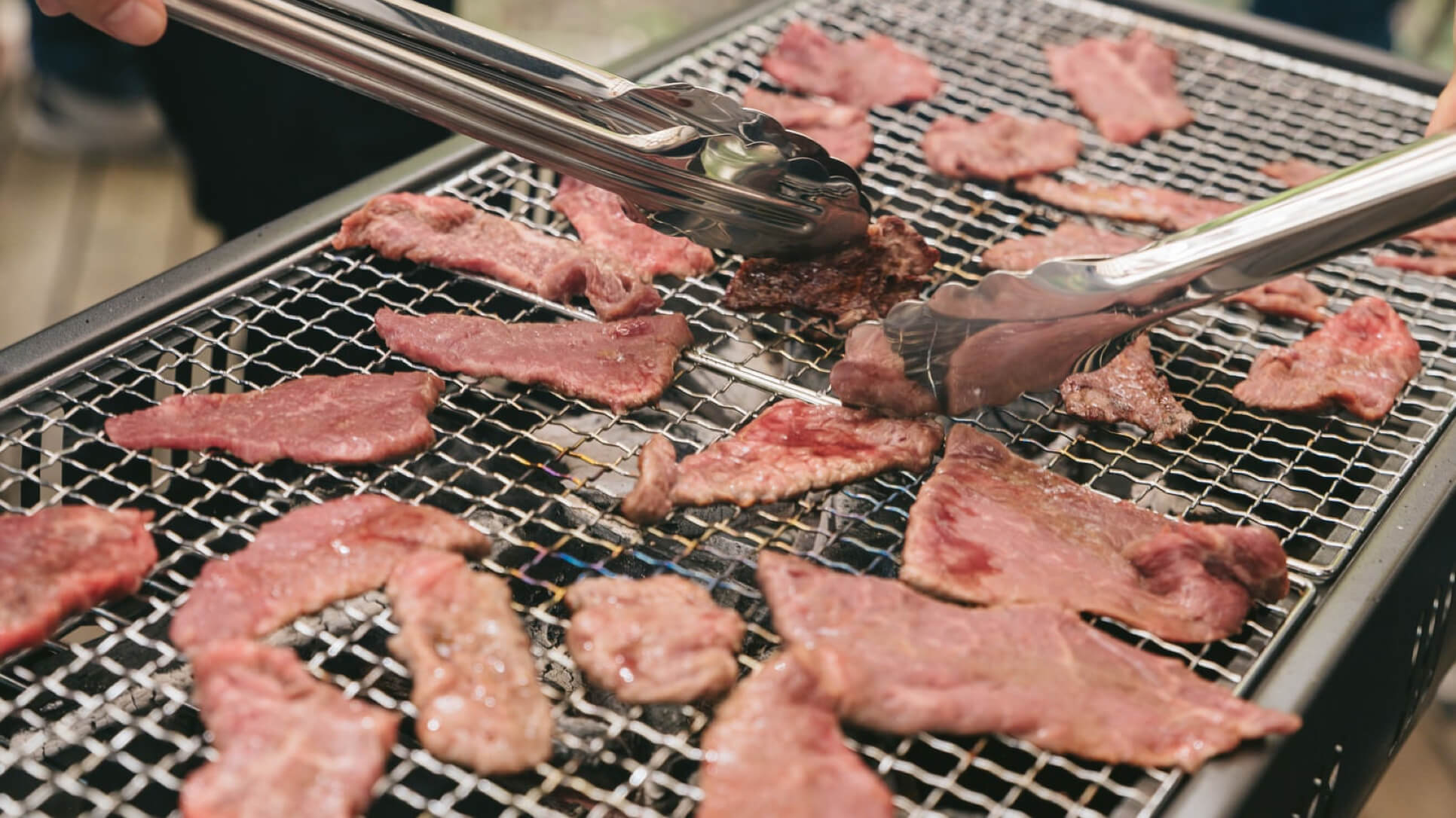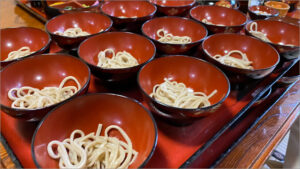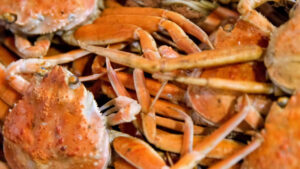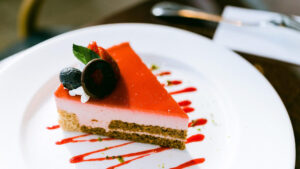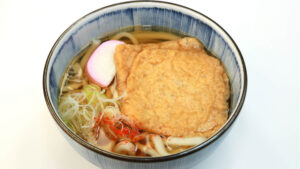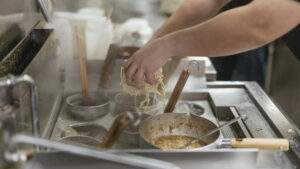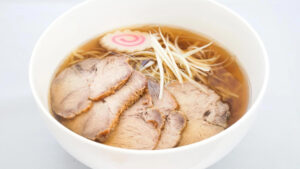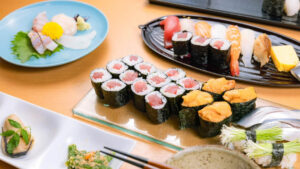“Even on a short stay, I want to savor the essence of Japan”—all-you-can-eat dining is perfect for travelers who feel that way. Tokyo offers a wide range of renowned restaurants by genre, from yakiniku and shabu-shabu to sushi and hotel buffets, plus kushiage (deep-fried skewers) and tempura.
This article clearly explains how to choose the right place without regrets—covering time required, budget, broth selection, and ordering flow—along with reservations, payment, and etiquette. We also highlight tips on English menus and cashless payment so first-time visitors can relax and fully enjoy “delicious Tokyo.”
Contents
Genre-Based All-You-Can-Eat Picks
In Tokyo, all-you-can-eat options are clearly divided by genre—yakiniku (grilled meat), shabu-shabu, and sushi/hotel buffets. Start by deciding your trip plan (lunch or dinner, time available, budget) and your preferences (meat, seafood, vegetables, desserts), then choose by genre to avoid disappointment. Most restaurants set time limits (about 90–120 minutes) with a last order; some may charge for leftovers, so ordering in small portions first is the key.
All-You-Can-Eat Yakiniku
You grill the meat yourself on a tabletop grate. Smoke and aroma can cling to clothing, so bringing a light outer layer is wise. Use the raw-meat tongs separately from your eating chopsticks, and let excess fat drip at the edge of the grill for a lighter finish so you can enjoy to the end. Many places offer nomihodai (all-you-can-drink), which is popular for groups.
Value-Focused Choices
Typical budgets: lunch ¥1,500–¥2,500; dinner ¥2,500–¥3,800. Look for a “basic” plan that covers favorites like kalbi (short ribs), rosu (loin), and harami (skirt steak), plus salads, kimchi, and even ice cream. Combine quick-cooking thin-sliced meats with vegetables to keep things moving and boost satisfaction. Start with small tastings of popular cuts, then reorder the ones you liked best to minimize waste.
Wagyu & Premium Cuts
High-end courses featuring A4–A5 wagyu and rare cuts (e.g., misuji top blade, ichibo rump cap, zabuton chuck flap) typically run 90–120 minutes and cost around ¥5,500–¥9,000. To enjoy the sweetness of the fat, start simply with shio (salt), then try tare (sauce), or switch it up with wasabi–soy or a “sukiyaki-style” egg-yolk dip. Avoid overcooking: give one side a quick sear, flip briefly, and serve. Reservations are recommended during busy hours.
All-You-Can-Eat Shabu-Shabu & Sukiyaki
For shabu-shabu, swish thin-sliced beef briefly in hot broth and enjoy with dipping sauces. Sukiyaki is simmered in a sweet soy broth (warishita) and traditionally dipped in raw egg. Both are usually 90–120 minutes and include vegetables, tofu, mushrooms, and a “finisher” like noodles or rice. Use separate tongs for raw meat and your eating chopsticks, and keep the pot at a gentle boil—too strong a heat can toughen the meat.
Choose Your Broth
Two-broth pots are common. Combine classic kombu stock with options like spicy, sukiyaki-style, soy milk, or yuzu–salt to suit your group’s preferences and spice tolerance. Vegetarians should confirm if fish stock (e.g., katsuobushi) is used and request kombu-only if needed. If the flavor weakens, ask for more broth, and add ingredients in order of cooking time—longer-cooking items first—to keep textures intact and flavors concentrated.
Domestic Beef Tasting Plans
Upper-tier plans that let you compare domestic beef and assorted cuts typically run ¥2,500–¥3,800 for lunch and ¥3,800–¥6,500 for dinner. Start with lean cuts → more marbled cuts. For shabu-shabu, swish the meat for 3–5 seconds—pull it out as soon as the color changes—and enjoy with ponzu (citrus soy) or goma-dare (sesame sauce). To enjoy the progression of flavors, begin with a pinch of salt to taste the beef’s sweetness, then move to sauces, and finally add condiments like scallions and yuzu kosho. Order in small rounds to avoid waste and keep each bite at its best.
Top Sukiyaki Specialty Shops
At famous sukiyaki houses, staff may cook tableside. Part of the charm is the regional style: Kansai often sautés with sugar and soy before adding broth, while Kanto simmes in a prepared warishita (sweet soy broth). Even for all-you-can-eat, service is usually time-limited with refills. For tenderness, briefly sear one side of the meat and then give it a quick simmer in the broth. If you prefer not to use raw egg, ask for no egg or a soft-boiled egg. Because warishita skews sweet, you can request extra stock or a lighter broth mid-meal to keep the flavor balanced.
All-You-Can-Eat Sushi, Seafood & Kushiage
From upscale hotel buffets to casual specialty spots, seafood-focused AYCE venues typically offer 90–120 minute sessions. Start with small portions to sample, then go back for favorites to avoid waste. When dipping sushi, touch the fish side to the soy so the rice doesn’t fall apart. For seafood in general, eat in the order of raw → warm dishes to preserve delicate flavors.
Hotel Buffets
High-end hotel buffets offer live kitchen stations (hand-pressed sushi, carving roasts, tempura) and clear allergy labeling, making them reassuring for first-time visitors. Dinner typically costs ¥5,000–¥8,000; weekends and window seats get busy, so advance reservations are best. Dress codes are usually smart casual, and seatings may run in fixed time slots (e.g., 17:30–19:00 / 19:30–21:00). With a good balance of desserts and Japanese/Western/Chinese dishes, they’re ideal for groups.
All-You-Can-Eat Crab & Seafood
Specialized crab, sashimi, and sushi buffets tend to shine in winter, though many Tokyo spots offer them year-round. Expect prices around ¥3,500–¥6,500. For speed, extract the crab meat first and then eat; ask for a shell bowl and crab scissors. For sashimi, enjoy the progression—white fish → red fish → fattier cuts. Dip lightly in soy and place wasabi on the fish side for balance.
Kushiage & Tempura: Best When Freshly Fried
With self-fry styles, coat ingredients lightly in batter, then panko, and lower gently into oil for 2–3 minutes. Switch flavors with salt, tentsuyu (dipping broth), or lemon. Where sauce bottles are shared, remember the “no double-dipping” rule. Typical prices are ¥2,500–¥4,500. To keep things light, eat in the order of vegetables → seafood → meat and order in small batches so each bite arrives hot and crisp.
Recommended All-You-Can-Eat Restaurants
Shabu-Yo
An all-you-can-eat shabu-shabu chain where you can mix and match meats, broths, sauces, and vegetables to your taste. Some locations also offer sushi-included courses. Reservations are available, multiple payment methods are supported, and the official site provides allergy information, seasonal promotions, and app coupons—making it very friendly for first-time travelers.
Sample Course
Beef Tongue & Domestic Beef Shabu-Shabu All-You-Can-Eat
Adult: ¥4,199 (¥4,619 incl. tax)
- Perks: Unlimited beef tongue & domestic beef; lemon-herb broth included at no extra charge.
Course Contents
Meats
- Beef tongue
- Domestic beef
- Akagiyama pork
- Beef misuji (top blade)
- Jjukkumi (baby octopus)
- Mozzarella
- Spicy ramen
- Beef
- Pork shoulder loin
- Pork belly
- Chicken
Dinner only
- Tsukune (chicken meatballs)
- Nigiri sushi
Vegetables & Side Dishes
- Fresh vegetables, sauces & condiments, salads, udon, ramen
- Rice, curry, desserts, and more
- Please help yourself from the buffet station.
Kushiya Monogatari
A DIY kushiage (deep-fried skewers) buffet: pick your favorite ingredients from the buffet line and fry them yourself at the table’s built-in fryer. Frying time guides are posted, and salads, curry, and desserts are also all-you-can-eat. Sessions are typically 70–90 minutes depending on location and time of day. To maximize satisfaction, fry in small batches so every bite is hot and crisp. Advance booking and checking house rules at entry make things smooth.
Sample Course
[Weekday Dinner] 90-minute All-You-Can-Eat Skewers
Price: ¥3,600 (tax included)
- Notes: 90 minutes per person; dessert buffet included. Elementary school: ¥1,700 / Preschoolers: ¥550 / Under 3: Free. When booking online, include infants (free) in the party size.
- Items: ~30 kushi (skewer) varieties + ~20 side dishes + ~20 desserts
- Party size: From 1 guest
- All-you-can-drink: Not included
Course Contents
Kushi Menu (30+)
- Classics: Beef, pork, shrimp, chicken thigh, shishito
- Eggplant, pumpkin, lotus root
- Fun picks: Takoyaki, taiyaki, etc.
Side Dishes (20+)
- Seasonal salads, assorted fried snacks, rice, curry, etc.
Fan Favorites
- Make-your-own soft-serve ice cream
- “Ochazuke” (tea-over-rice) finishing bar
Desserts (20+)
- Seasonal fruits, seasonal sweets, house-made cakes, etc.
Tori-Hodai
An all-you-can-eat yakitori chain with four course tiers (e.g., Economy / Standard / Luxury / Premium). Sessions are typically 100 minutes with the last order 20 minutes before the end. With a wide range of skewers and sides, first-timers should start with the Standard course, then reorder favorites in small batches. Offerings vary by location, so it’s best to check the official Courses page before visiting.
Sample Course
Standard Course
Price: ¥3,000 (tax included)
- Items: 45 selections in total
- Classic yakitori
- Salads
- Fried sides
- Desserts
Yakiniku King
A popular grill-it-yourself chain with touch-panel ordering. Three core AYCE sets—58-Item, King Course, and Premium—make it easy to match your budget. Family perks are clear: infants free, elementary school half price, and ¥500 off for guests 60+. Sessions are typically 100 minutes with the last order 20 minutes before the end. Lunch AYCE is available at some locations; availability and pricing vary by store. The flagship King Course includes the brand’s “Five Signatures” plus seasonal specials.
Sample Course
King Course
Price: ¥3,608 (tax included)
- Family perks: Infants free / Elementary school half price / 60+ get ¥500 off
Yakiniku Highlights
- Signature: King Kalbi (short rib)
- Signature: Seared “Sukiyaki” Kalbi
- Signature: Pot-marinated “Dragon” Harami (skirt steak)
- Signature: Large Sirloin with Scallion & Ponzu
- Signature: Thick-cut Prime Loin — Garlic Butter Soy
- …and more
Sides
- Seafood
- Grilled vegetables
- Kimchi
- Salads
Yuzu-An
A popular chain offering all-you-can-eat sushi, shabu-shabu, sukiyaki, and tempura. An English-capable touch panel is available, and locations operate in major Tokyo areas (e.g., Akihabara, Shinjuku West Exit). It’s traveler-friendly with broad cashless support: credit cards (VISA/JCB/Amex) and QR payments (Alipay/WeChat Pay).
Course Options (tax included)
- Value Course: ¥2,948
- Yuzu-An Course: ¥3,608
- Deluxe Course: ¥4,708
Sample Course
Yuzu-An Course
Price: ¥3,608 (tax included)
The most popular plan. Enjoy carefully selected beef for shabu-shabu along with seasonal limited sushi and shabu-shabu items.
- Family perks: Infants free / Elementary school half price / 65+ get ¥500 off
Included Categories
- Sushi
- Shabu-shabu
- À la carte dishes
- Desserts
Gyu-Kaku
A classic yakiniku chain. All-you-can-eat typically comes in four tiers (e.g., 70-Item, Gyu-Kaku Course, Beef Tongue & Premium, Kuroge Wagyu) so you can match taste and budget. The signature Gyu-Kaku Course is usually 100 minutes and covers popular cuts plus a wide range of sides (details and prices vary by location). Beyond the standard branches nationwide, there are also buffet-focused locations. Many stores offer traveler-friendly perks such as infants free, elementary school half price, and senior discounts, and support online waitlisting/reservations.
Sample Course
Gyu-Kaku Course
Price: ¥5,478 (tax included)
- Family perks: Preschoolers free / Elementary students half price / 65+ get ¥500 off
Included Categories
- Yakiniku (assorted beef & pork)
- Seafood
- Grilled vegetables
- Rice dishes
- Soups
- Noodles
- Salads
- Kimchi
Sweets Paradise
A popular dessert buffet featuring cakes, parfaits, and seasonal fruits—plus pasta, curry, and a salad bar. Plans are course-based with time limits. For example, the Shinjuku East Exit location offers a Sui-Para Course (70 min), a Special Course (90 min, includes Häagen-Dazs & il gelato + salad bar), and a Full-Para Course (100 min, seasonal fruit buffet). Prices vary by store and season, and peak-holiday weekend rates may apply. You can book 24/7 via the official app. Some locations provide English pages, making it friendly for visitors.
Sample Course
Sui-Para Course
Price: ¥1,690 (tax included) — Time limit: 70 minutes
- Sweets
- Light foods
- Drink bar
Practical Guide for Travelers
Reservations & Day-of Flow
The basic flow—easy even for first-timers—is ① Reserve → ② Arrive → ③ Order → ④ Pay. When booking, share your party size, time, course, and any allergies to keep things smooth. On arrival, give your name and follow staff to your table. After confirming your course on the touch panel or paper menu, the timer starts (most venues allow 70–120 minutes). After the last order, place any dessert or “finisher” dishes, then check how to pay (at the table or at the register) before leaving.
Tips for Online Booking & Same-Day Walk-ins
Online booking lets you lock in a time slot, course, and seat type in advance. Use the notes field to mention needs like an English menu or stroller access. Aim to arrive 5–10 minutes early. For walk-ins, target off-peak times (around 11:00 or 17:00) to improve your chances. If full, join the waitlist and stay nearby. Always check confirmation SMS/email after booking.
Time Limits & Last Orders
All-you-can-eat sessions are time-limited (about 70–120 minutes). The last order is usually 10–20 minutes before the end. Because some places charge for excess leftovers, take small portions first and reorder favorites. Keep an eye on any table timer/sandglass, and place fry items or finishing dishes well before last call.
Cancellation Rules & Wait-Time Strategies
No-shows may incur fees, so contact the restaurant as soon as you know you can’t make it. Notify them promptly of any party-size changes so they can adjust seating. To avoid long lines, try weekdays, lunch, or opening time; consider another branch of the same chain, and say you’re fine with counter seating. If you have large luggage, ask in advance whether there’s a storage area at the entrance.
Basics of Pricing, Payment & Tax-Free
Service Charges & All-You-Can-Drink Price Ranges
- Displayed prices are usually tax-included (10% consumption tax for dine-in).
- High-end and hotel restaurants may add a service charge (around 10%). Casual chains and AYCE spots often don’t add one.
- Izakaya pubs may add a seat/otoshi fee (a few hundred yen per person). Buffets typically don’t.
- Nomihodai (all-you-can-drink) usually runs 70–120 minutes. Soft-drink bars cost a few hundred yen; alcoholic nomihodai typically starts in the ¥1,000s (varies by venue/time). Many places require the same drink plan for the whole table, with last orders 10–20 minutes before the end.
Cashless Payments & Transit IC Cards
- Major chains widely accept credit/debit (Visa/Mastercard, etc.), transit IC cards (Suica/PASMO), and QR payments (PayPay/Alipay/WeChat Pay). Independent shops may be cash-only—confirm at entry.
- Transit IC cards are prepaid. If the balance is insufficient, payment won’t go through—top up in advance or pay any shortfall in cash at the register.
- Payment may be at the table or at the register. For split bills, ask if separate checks are possible.
Tax-Free (Duty-Free) Policy: Dining Is Not Eligible
- Restaurant dining isn’t tax-free. Buffets, drink plans, and takeaway meals are also ineligible.
- Tax-free applies only to goods you take out of Japan—bought at designated tax-free shops with a passport and minimum purchase amount.
- Therefore, AYCE fees and any service charges are taxed as usual.
Enjoying Tokyo’s All-You-Eat the Smart Way
Understand the time system (most sessions are 90–120 minutes) and the last-order rule, then start with small portions and reorder your favorites to maximize satisfaction. For yakiniku, adjust grilling by cut; for shabu-shabu, try a two-broth setup or tasting flights; for sushi and seafood, follow the order white fish → red fish → fatty cuts to enjoy the flavor progression. Reserve around off-peak slots or confirm online in advance, and at entry check acceptance of credit cards, transit IC (Suica/PASMO), and QR payments. If needed, ask ahead about allergy labeling and vegetarian/halal accommodations. Finally, since prices and offerings vary by location and season, verify details on the official website and complete a web reservation to lock in the best all-you-can-eat experience on the day.
